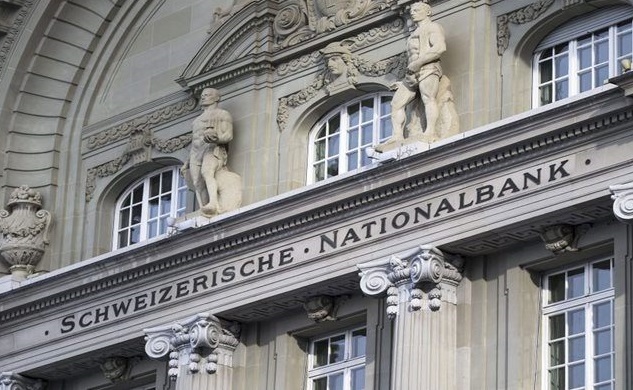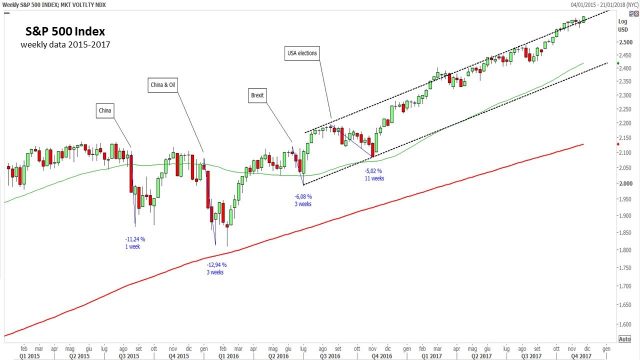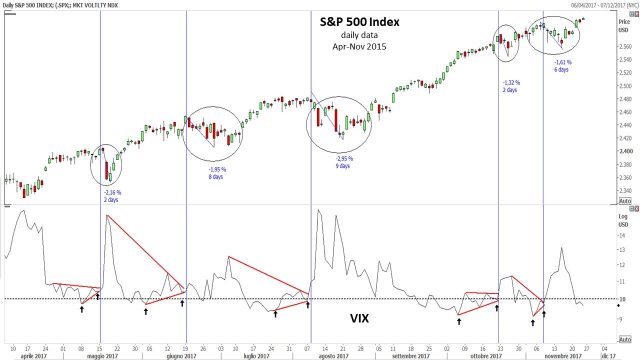SNB, Vix and new patterns

This Monday I was at Lantern Fund Forum of Lugano, and the main speaker was John Mauldin. One of his main reflections was on how it is possible to manage money in a world where central banks and governments buy assets massively and indiscriminately, without assessing the value of what they buy.
Certainly the use of Quantitative Easing by central banks has contributed to a considerable reduction in the volatility of financial assets, and we have seen, especially in the American stock market, as a series of negative events, which in past years would have led to strong corrections, absorbed in a short time and without excessive drawdowns.
If we look at the graph of the S&P500 from the beginning of 2015, we can see that the most important crisis of the last three years, started in August (Chinese crisis), and led to a drawdown of -11,24% (calculated on weekly candles). At the beginning of 2016, we had further problems on China and oil price, with a decline of -12,94%. Brexit and the U. S. elections, with Trump’s unexpected victory, led to sudden market crashes, but certainly not profound (respectively -6,08% and -5,02%). And the whole situations were absorbed in a few weeks. Volatility fell to very low levels in 2017. The biggest drawdown we had in August was a miser -2.95%.

The interesting aspect is that purchases on the US market are not exclusively due to domestic QE. In fact, other central banks are also making massive purchases on the US market. The Swiss National Bank, has a buyer role that has led it to be, as also Mauldin wrote on his site (1), one of the largest, if not indeed the very largest, hedge funds in the world.
The SNB’s balance sheet is a CHF 813 billion, 760 billion of it is the form of securities, of which 90 billion are in equities. The other 670 billion are held in EUR and US debt securities.
SNB has bought roughly $17 billion worth of US stocks so far this year. Switzerland is now the eighth-largest public holder of US stocks. And apparently it is concentrated on the largest of the large-cap stocks. SNB owns 19 million shares of Apple (as of March 31). That is roughly 3% of the current market.
And also others Central Banks, as BOJ are buying American assets.
All these institutional buyers influence the volatility of the US market, which has become historically very low. The VIX index, which measures volatility in the US market, as of May 2017, began to fall below the level of 10. In the past, this happened only once in 1994. In 2017 it has already happened several times and this seems a critical level that is forming a pattern. Whenever the VIX falls below 10 and forms the pattern represented in the graph below (the VIX line that exit from the triangle formed by connecting higher lows that up-crosses the 10 level line, and lower highs), the stock market has corrections. The phenomenon occurred 5 times in 7 months.

1) http://www.mauldineconomics.com/frontlinethoughts/bonfire-of-the-absurdities#those
Mario Valentino GUFFANTI CFTe – SAMT Vice President – Swiss Italian Chapter – mario.guffanti@samt-org.ch
Disclaimer: the above article is for general information and educational purposes only. It is not intended to be investment advice. Seek a duly licensed professional for investment advice.

